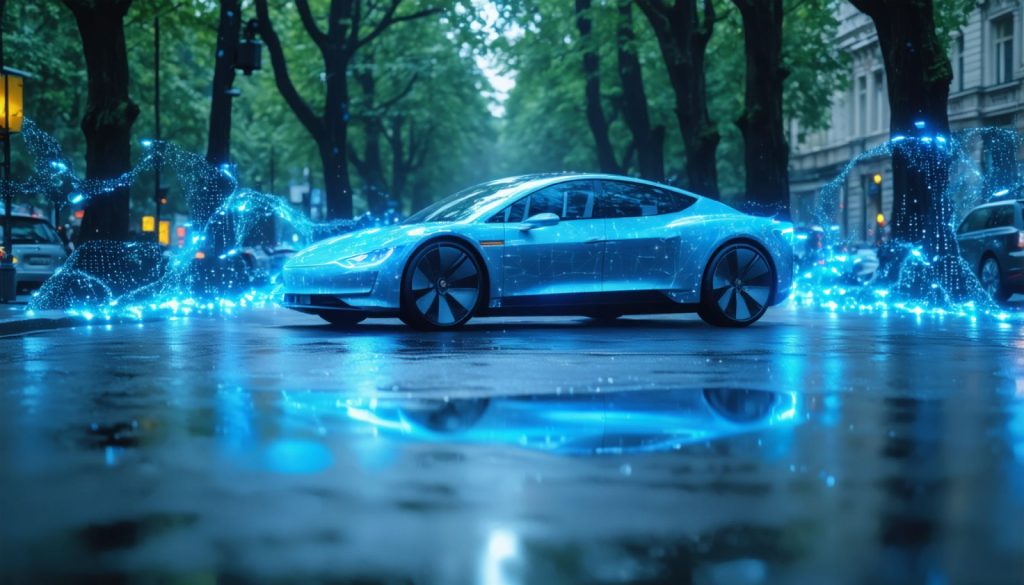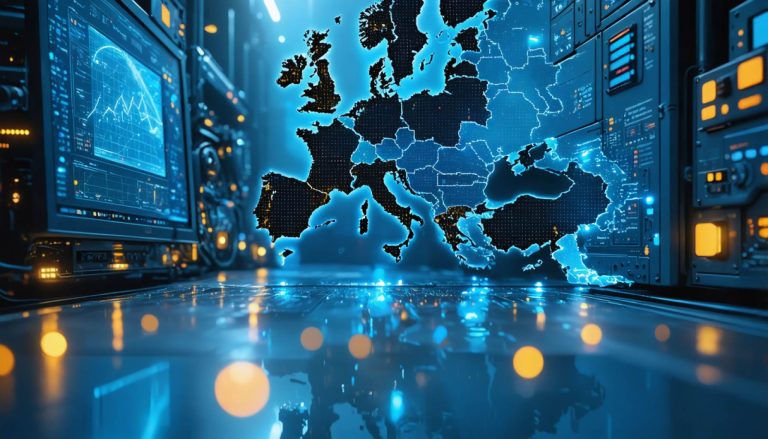
- The Internet of Things (IoT) significantly enhances modern commutes through smart technology, creating a seamless experience for city travelers.
- IoT sensors in public transport provide real-time tracking, optimizing routes to avoid congestion and improve punctuality.
- Connectivity across transport networks, including smart grids and apps, offers customized travel experiences with live updates and optimal route suggestions.
- Safety is prioritized with IoT-enabled Vehicle-to-Everything (V2X) communication, which helps prevent collisions and enhances road safety.
- IoT technology supports eco-friendly transportation by optimizing electric buses, reducing emissions, and ensuring sustainable commutes.
- The IoT revolution in transportation promises smarter, safer, and more environmentally friendly travel experiences.
Venture into the bustling heart of any modern city, and you’ll witness a digital metamorphosis reshaping how we move and connect. Imagine stepping into a sleek, autonomous vehicle that whispers future. This isn’t science fiction—this is the Internet of Things (IoT) revolutionizing your everyday commute.
Sensors Leading the Way
Hidden beneath the polished exteriors of modern public transport, IoT sensors work tirelessly, orchestrating seamless travel experiences. Picture this: a city bus equipped with real-time tracking devices not only informs you of its exact location but also predicts your arrival time with pinpoint accuracy. These smart systems feed comprehensive data to traffic managers, instantly recalibrating routes to dodge congestion, making “late again” a thing of the past.
The Symphony of Connectivity
It’s not just individual vehicles benefiting from IoT brilliance. Entire transport networks are flourishing through interconnected systems. Think of sprawling smart grids mapping everything from the subway lines crisscrossing the metropolis to bike-sharing services whizzing by. Commuters enjoy a tailored travel guide, where smartphone apps provide live updates, suggest optimal routes, and even offer real-time feedback on seat availability.
Safety First with IoT
Safety on the road takes center stage with IoT guardians. Cars converse with each other via Vehicle-to-Everything (V2X) communication, exchanging vital data to prevent collisions. Imagine a vehicle braking automatically as its sensors detect a pedestrian stepping onto the crosswalk. IoT doesn’t just promise efficiency; it ensures every journey prioritizes safety.
An Eco-Friendly Ride
In a world increasingly conscious of its carbon footprint, IoT is an ally in greening our commutes. Electric buses optimized with IoT systems reduce emissions by communicating directly with power grids. They adjust charging in real time, drawing energy during off-peak hours and conserving more than just fuel. This synergy ensures a sustainable journey with each bus ride.
The Takeaway
The IoT-enabled transformation of transportation epitomizes forward-thinking innovation. It interlaces technology with everyday life, crafting commutes that are smarter, safer, and greener. Step into this future where your ride doesn’t just take you places—it interacts, adapts, and evolves alongside you.
Have you embraced the IoT-driven commute? The future is already at your doorstep, ready to make daily routines extraordinary.
Ride Into the Future: How IoT is Revolutionizing Urban Transport
Exploring the Acceleration of IoT in Public Transportation
The Internet of Things (IoT) has redefined the way we perceive and interact with urban transport. As cities grow into smart metropolises, it becomes evident that IoT is not only transforming but also optimizing our daily commutes to be more efficient and sustainable.
Real-World Use Cases of IoT in Transportation
1. Predictive Maintenance: IoT sensors monitor vehicle health in real time, predicting potential mechanical failures before they occur. This preventive approach minimizes downtime and improves the reliability of public transport systems.
2. Dynamic Traffic Management: IoT systems analyze traffic patterns to optimize lights and crossings, maintaining a fluid flow and reducing traffic jams. For example, adaptive traffic lights change in response to real-time traffic data, lessening congestion in dense urban areas.
3. Smart Parking Solutions: IoT-enabled parking sensors notify drivers about available spots, reducing the time and fuel spent searching. This can revolutionize parking in cities by significantly cutting emissions associated with idling.
Industry Trends and Market Forecasts
– The global smart transportation market is projected to reach over $130 billion by 2024, driven by increasing investments in smart city infrastructure and the growing need for efficient urban transport solutions.
– Electric vehicles (EVs) are expected to rapidly integrate with IoT technologies, enabling features like remote diagnostics, automated insurance processing, and real-time energy consumption tracking.
Reviews & Comparisons
– Traditional vs. IoT-Enabled Transport: IoT enhances traditional transport by reducing delays, improving safety, and supporting sustainable practices. Unlike conventional systems, IoT-driven transport uses data-driven insights for continuous improvement.
Controversies & Limitations
– Privacy Concerns: The collection of personal data through IoT devices raises privacy issues that need addressing to prevent misuse. Transparent data policies and robust cybersecurity measures are crucial.
– High Setup Costs: The initial investment for IoT infrastructure can be significant, posing challenges for cities with limited budgets. However, the long-term benefits often outweigh the initial expenditures.
Insights & Predictions
– IoT advancements will pave the way for fully autonomous buses and shuttles, reducing labor costs and potentially increasing the availability of public transport in less dense areas.
– The integration of blockchain technology in IoT might enhance security and data integrity, providing safer and more transparent transport solutions.
How-To Steps & Life Hacks for Commuters
– Utilize Transport Apps: Download apps that leverage IoT data for real-time updates and route optimization for a smoother commute.
– Plan Green Journeys: Opt for electric public transport options where available to reduce your carbon footprint.
Actionable Recommendations
1. Stay Informed: Keep track of the latest technological trends in your city’s transport system to maximize the benefits of IoT.
2. Advocate for Change: Support policies that promote smart city initiatives and advocate for more IoT integration in public transport.
The future of commuting is not just about getting from point A to point B. It’s about making that journey smarter, safer, and more sustainable. The IoT revolution in urban transport is here, and it’s set to make every trip an extraordinary experience. Embrace these changes and be part of a connected, efficient future.
For more insights into smart cities and the Internet of Things, visit IOT For All or explore useful resources on Smart Cities Dive.



